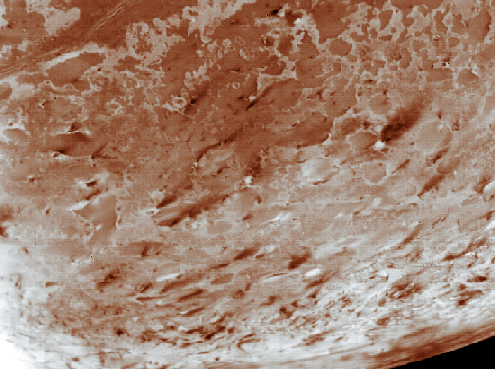Credit & Copyright: NASA, Voyager Project,
Copyright Calvin J. Hamilton
Explanation:
In August of 1989 NASA's
Voyager 2
spacecraft passed by Neptune, the most distant of the solar system's gas
giant planets. Its encounter with Neptune climaxed with its closest approach
to Neptune's largest moon Triton. From a distance of about 24,000 miles
the robot space probe surveyed Triton's surface, whose temperature
averages nearly -400 degrees Fahrenheit, and discovered surprising evidence
of a complex and active world.
For example, the prominent dark streaks in this image seem to come from
small volcanoes and may
consist of nitrogen frost mixed with organic compounds ejected during
geyser-like eruptions.
For more information about Triton, see Calvin J. Hamilton's Triton page .
1999 2000 2001 2002 2003 2004 2005 2006 2007 2008 2009 2010 2011 2012 2013 2014 2015 2016 2017 2018 2019 2020 2021 2022 2023 2024 2025 |
Январь Февраль Март Апрель Май Июнь Июль Август Сентябрь Октябрь Ноябрь Декабрь |
NASA Web Site Statements, Warnings, and Disclaimers
NASA Official: Jay Norris. Specific rights apply.
A service of: LHEA at NASA / GSFC
& Michigan Tech. U.
|
Публикации с ключевыми словами:
triton - Тритон - вулкан
Публикации со словами: triton - Тритон - вулкан | |
См. также:
Все публикации на ту же тему >> | |
